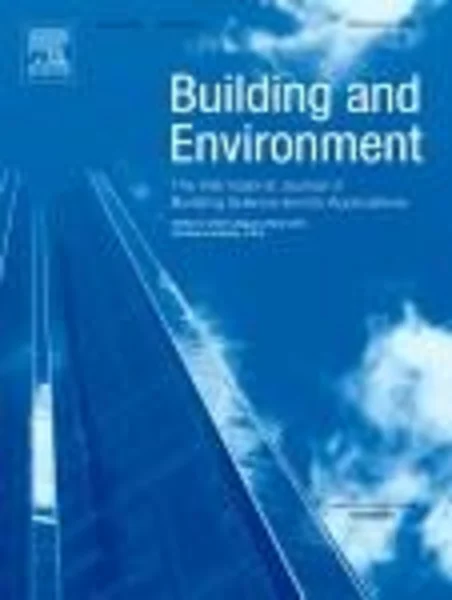-
modeling the evaporation and dispersion of airborne sputum droplets expelled from a human cough
جزئیات بیشتر مقاله- تاریخ ارائه: 1390/01/01
- تاریخ انتشار در تی پی بین: 1390/01/01
- تعداد بازدید: 611
- تعداد پرسش و پاسخ ها: 0
- شماره تماس دبیرخانه رویداد: -
this study contributes a new model to simulate the evaporation and dispersion of sputum droplets from human coughs or sneezes. it is the first time different chemical components have been included in order to estimate the transport of sputum or similar biological droplets. this modified model demonstrates the ability to describe real-world phenomena that the widely used single droplet model lacks. evaporation and dispersion of airborne sputum droplets originating from a human cough are simulated using this model combined with an initially buoyant turbulent jet. constituents of sputum droplets such as nacl, amino acids, carbohydrates, and lipids are included. effects of these chemical components on evaporation rate, velocity, and temperature of droplets are investigated in detail. the results obtained for sputum droplets will provide a perspective of what conditions the viruses within a droplet might face upon being ejected from the mouth during a cough. finally, computational fluid dynamics (cfd) and probability density function (pdf) techniques were used to complement the new model with a simulation of a cough jet and the dynamics of droplet nuclei in confined spaces. numerical results indicate that a 10 microns sputum droplet will evaporate to become a droplet nucleus (3.5 microns) in 0.55 s at 0.8 or 80% rh, in 0.3 s at 0.5 or 50% rh, and in 0.25 s at 0.2 or 20% rh. the droplet temperature decreases rapidly from human body temperature to room temperature, which may affect the viability of any carried virus.
مقالات جدیدترین رویدادها
-
استفاده از تحلیل اهمیت-عملکرد در ارائه الگوی مدیریت خلاقیت سازمانی و ارائه راهکار جهت بهبود
-
بررسی تاثیر ارزش وجوه نقد مازاد بر ساختار سرمایه شرکت های پذیرفته شده در بورس اوراق بهادار تهران
-
بررسی تأثیر سطح افشای ریسک بر قرارداد بدهی شرکت های پذیرفته شده در بورس اوراق بهادار تهران
-
بررسی تأثیر رتبه بندی اعتباری مبتنی بر مدل امتیاز بازار نوظهور بر نقد شوندگی سهام با تأکید بر خصوصی سازی شرکت ها
-
تأثیر آمیخته بازاریابی پوشاک ایرانی بر تصویر ذهنی مشتری پوشاک ایرانی (هاکوپیان)
-
بررسی رفتار الکتروشیمیایی امپدانس پیگمان فسفات روی و نقش محافظتی آن به عنوان پوشش اولیه
-
مدلسازی تعادل فازی بخار-مایع و مخلوط دی ایزوپروپانول آمین و آب با استفاده از معادله حالت cpa
-
مطالعات زمین شناسی مهندسی تونل تأسیسات بزرگراه طبقاتی صدر
-
ارزیابی کیفیت منابع آب در محدوده ی معدنی کوه زر، غرب تربت حیدریه
-
بررسی درآمد احتمالی مالیات بین المللی بر صادرات نفت خام برای تامین مالی برنامه های کاهش تغییرات آب و هوایی : استفاده از مدل موازنه عمومی و پویا
مقالات جدیدترین ژورنال ها
-
مدیریت و بررسی افسردگی دانش آموزان دختر مقطع متوسطه دوم در دروان کرونا در شهرستان دزفول
-
مدیریت و بررسی خرد سیاسی در اندیشه ی فردوسی در ادب ایران
-
واکاوی و مدیریت توصیفی قلمدان(جاکلیدی)ضریح در موزه آستان قدس رضوی
-
بررسی تاثیر خلاقیت، دانش و انگیزه کارکنان بر پیشنهادات نوآورانه کارکنان ( مورد مطالعه: هتل های 3 و 4 ستاره استان کرمان)
-
بررسی تاثیر کیفیت سیستم های اطلاعاتی بر تصمیم گیری موفق در شرکتهای تولیدی استان اصفهان (مورد مطالعه: مدیران شرکتهای تولیدی استان اصفهان)
-
بررسی تهدیدهای نوظهور در امنیت سایبری
-
رابطه میان سهامداران نهادی و مشکلات نمایندگی با تمرکز بر نقش مدیریت سود و عملکرد مالی
-
تأثیر توانایی مدیریت بر مدیریت سود واقعی و مدیریت ریسک یکپارچه شرکتها
-
kinetic study of adsorption methylene blue dye from aqueous solutions using activated carbon from starch
-
fabrication and characterization of a novel magnetic mil-101(cr) nanocomposite for selective selenite removal




سوال خود را در مورد این مقاله مطرح نمایید :